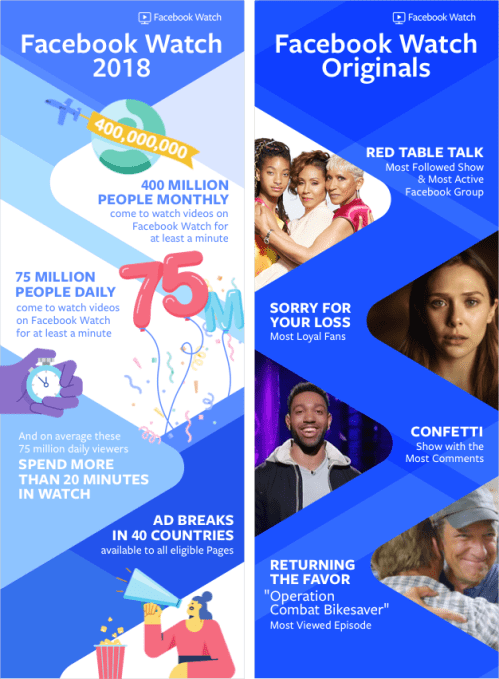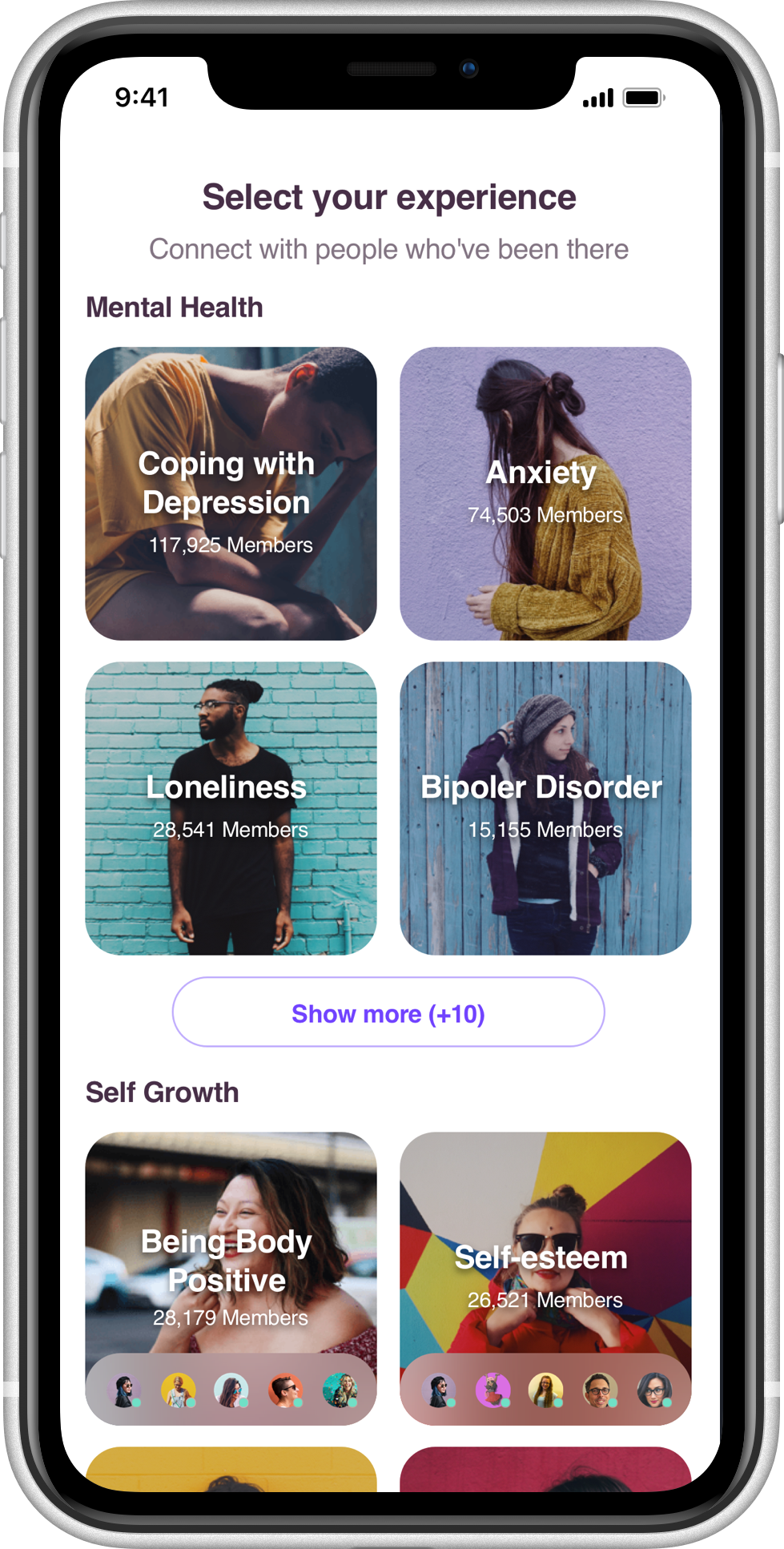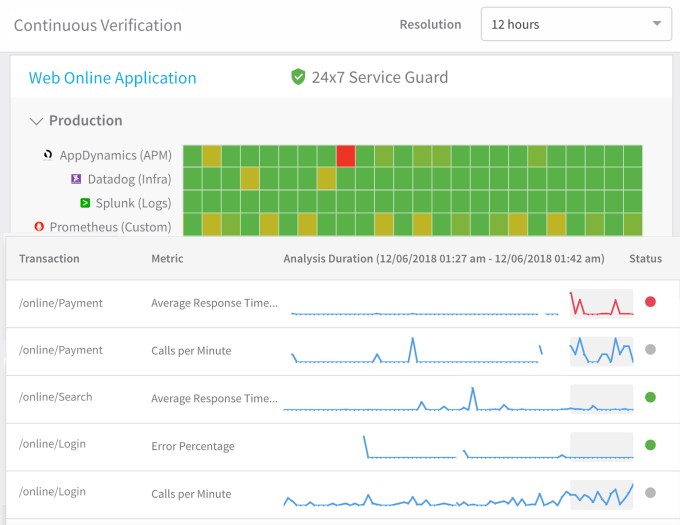Both Facebook Watch and Instagram’s IGTV have yet to become superstar video platforms, leaving Facebook at risk as more people seek streaming entertainment instead of status updates. So today Facebook is trying to build some buzz for Watch with new stats and rollouts. The free video hub that combines original content, sports, and cult favorite TV shows like Firefly now has 400 million users watching at least one minute per month. That’s not a ton of engagement amongst a wide audience. But on the brighter side there are 75 million users watching at least one minute per day with a much more promising average of 20 minutes per day.
Though that’s just 5 percent of Facebook’s 1.5 billion daily users, it indicates that if Facebook can get people hooked on its ad-supported shows, it could squeeze serious viewing time out of them. Just four months ago, Facebook was saying that only 50 million people spent at least 1 minute per month on Watch, so it’s making strong progress.
Watch is now available worldwide on desktop and Facebook Lite as well as the main Facebook app. And it’s rolling out ad breaks to 40 countries after an initial launch in 5 in August. It’s also renewing four shows for a second season: Huda Boss, Five Points, Sacred Lies & Sorry For Your Loss.

 But The Information reports that news media executives feel that while some shows are getting satisfactory viewership, ad revenue has been underwhelming. Six months ago, Facebook commissioned news programs from outlets like CNN and Buzzfeed. Facebook reportedly now plans to pay news video content producers less per show as it seeks to spread the same $90 million budget across more programs, potentially with a greater focus on international markets. That cut-back could make producing some shows tough, but at least the execs believe Facebook understands it must prioritize monetization for its content partners.
But The Information reports that news media executives feel that while some shows are getting satisfactory viewership, ad revenue has been underwhelming. Six months ago, Facebook commissioned news programs from outlets like CNN and Buzzfeed. Facebook reportedly now plans to pay news video content producers less per show as it seeks to spread the same $90 million budget across more programs, potentially with a greater focus on international markets. That cut-back could make producing some shows tough, but at least the execs believe Facebook understands it must prioritize monetization for its content partners.
To the end, Facebook plans to offer more options for advertisers like more targeting capabilities, and expanding its In-Stream Reserve premium ad inventory inside the top quality Watch shows. For individual video creators, Ad Breaks will become more widely available including within game streams from eSports stars. Facebook is also planning to expand its Brand Collabs Manager to additional countries so creators can get hooked up with sponsorship deals, and let more creators sign up fans for Patreon-style subscription payments.
The viewing stats have likely been bolstered by the addition of all episodes of Joss Whedon’s old TV shows Buffy The Vampire Slayer, Angel, and Firefly that users can binge watch for hours on end. 12 million Watch Party group video sessions have been launched to date, helping shows go viral. Facebook is now testing live picture-in-picture commentating that could let actors host viewing parties that feel like you’re sitting in the living room beside them. Facebook’s VP of video Fidji Simo writes that “With Facebook Watch, we set out to demonstrate what it looks like to build deep bonds through watching online video, instead of just having a passive viewing experience.”
Simo also notes that “People can find videos on Facebook in a number of different places — Watch, News Feed, Search, Pages and more — and all of these can feel different. We want to make the experience of watching video feel immersive no matter where you discovered it. As part of this effort, we’ll be testing a few things in the coming months, like creating a darker background whenever you immerse yourself into a video on mobile.”
Facebook has yet to concentrate its funding on a blockbuster tentpole video series — its Game Of Thrones or House Of Cards. The closest thing it has is the Elizabeth Olsen show Sorry For Your Loss, though viewership has been somewhat weak. Next year Facebook Watch will debut a revived and social media-infused web version of MTV’s Real World. But tapping its deep pockets to pay for one must-see original scripted series could help wedge Watch into people’s lives.




